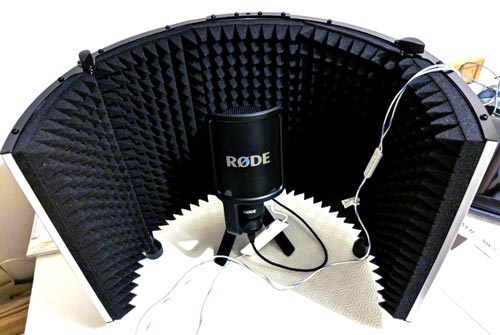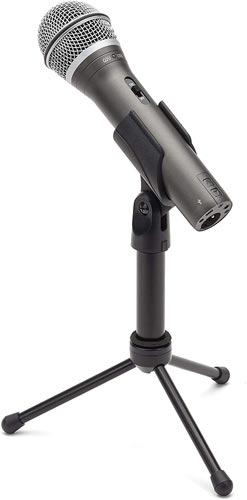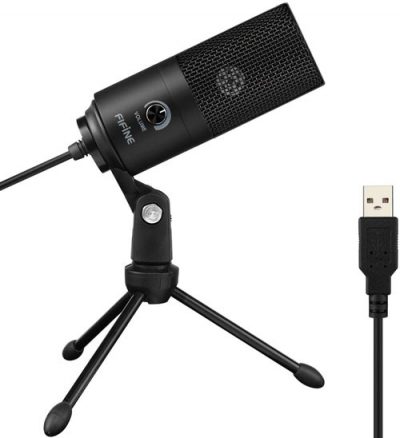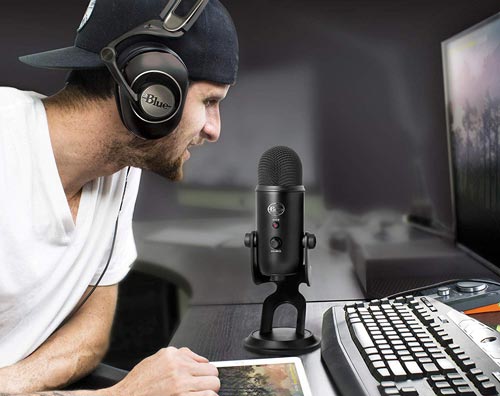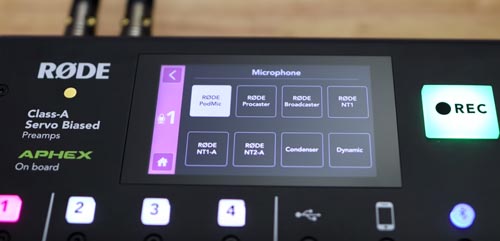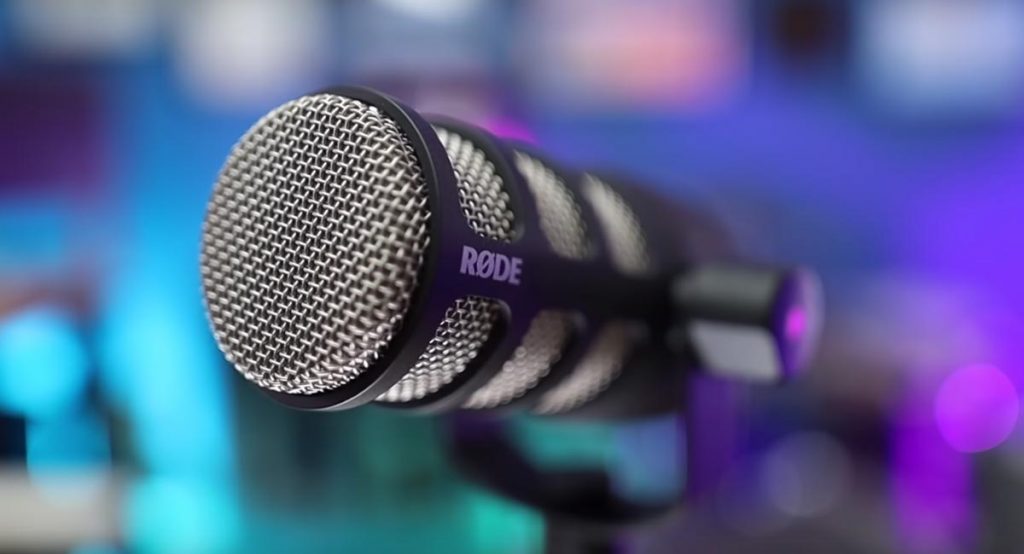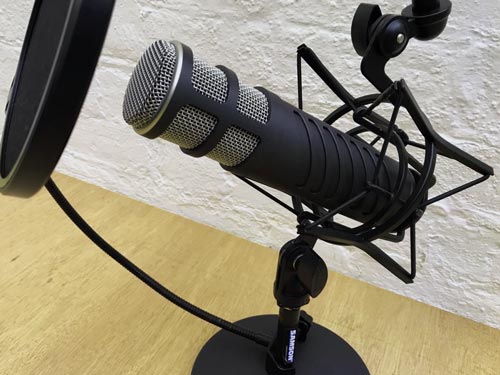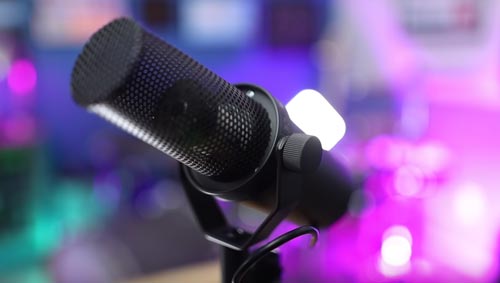Best Podcast Microphone for 2020
If you’re running a podcast or thinking of starting one, the first item on your to do list is probably acquiring a microphone. To record a podcast you could use a variety of microphones. From a $15 lavalier mic to a specially designed voice recording mic costing hundreds of dollars. You can also use your smartphone microphone, as many in the last couple of years have great mics.
What we’re hoping to achieve for our podcast is that nice, smooth, warm, close professional-sounding radio voice quality. As it happens, before I was a filmmaker I was a sound engineer. My job involved recording music and singing voices, mostly. Therefore, I can give you a few tips and one thing you should know is: the mic isn’t the whole deal.
Sound Reflections
How echoey is the room you will be recording in? When you speak (or make any noise), a hard surface will bounce the noise back to you causing an echo (aka reverberation). This doesn’t sound very professional and makes the voice sound harsh for the listener.
Professional recording setups (for example in your local radio station) have walls covered in noise reducing tiles. These act to soak up any reflections, resulting in a nice clear, echo-free voice quality. But those of us setting up our podcast at home probably don’t have the finances, time or inclination to cover the walls of a room in such tiles.
A room with soft furnishing, carpets and curtains will do a much better job or absorbing reflections than an empty room with bare walls and a wooden floor.
Background Noise
We can’t all have our own dedicated studio in the back garden, away from traffic noises, screaming kids, builders next door and so on. And background noise can really ruin your audio quality, no matter what mic your spend your hard-earned $s on.
Ironically, better quality mics will often pick up even more background noise. So after upgrading your microphone, you might find you suddenly have these other issues to deal with that you hadn’t noticed before.
An affordable way to reduce both these issues is to add an Isolation Panel to your set up.
Isolation Panel
If you already have a microphone but you just can’t get a good enough quality audio from it, adding an isolation panel will make a huge improvement. You might even decide you don’t even need a new mic after.
While this is designed to reduce reflection from your voice, it can also act to remove some background noise too. On the downside, the panel can obscure your view while talking. But still, it’s a cheap and convenient way to boost your audio quality.
This one from Neewer is affordable and doesn’t take up too much space.
Find Neewer Isolation Panel on AmazonConnection: XLR, 3.5mm Jack, USB
Microphones come with different plugs to connect to your recording device or mixer. XLR is the connection type professionals usually go for, as it has better protection from interference. But a 3.5mm jack or a USB connection is useful if you’re not set up to record using an XLR. Maybe you just want to go direct into a computer or smartphone.
Dynamic or Condenser
Put simply, dynamic microphones are generally cheaper and less sensitive, while condenser microphones are more expensive and more more sensitive. The latter also requires power (hence they are more sensitive).
Samson Q2U
A good one to start with is the Samson Q2U. It’s a dynamic microphone with an XLR and a USB connection, depending on your setup. The Q2U is a solid, durable, good quality mic with the option to start small (USB) and upgrade to more professional equipment (XLR) later on.
Find Samson Q2U on AmazonFifine K669B USB Microphone
The Fifine is a very affordable starter microphone for podcasting. While there’s no XLR option, it is a condenser microphone. It’s powered via the USB connector, so no need the 48v phantom power supply. This won’t provide spectacular voice quality, but it’s a step up from your laptop’s inbuilt mic, for example.
Find Fifine K669B on AmazonMXL 990 Condenser Microphone
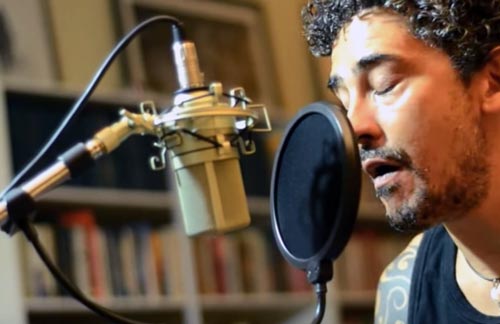
The MXL 990 Condenser Microphone is hugely popular, one for it’s audio quality and two for it’s very affordable price. The MXL 990 gives a strong, rich and deep audio quality for the spoken voice. This is not a new, mic but folks who bought one of these 10 or more years ago are still using them. So that is a good indication of the quality and the durability of the microphone.
The mic has a frequency response of 30 Hz – 20 kHz and uses XLR output (you’ll need a separate XLR mic lead). Although it doesn’t have a USB option, you could use a USB to XLR converter.
Find MXL 990 Condenser Microphone on AmazonBLUE Yeti Condenser Microphone
Probably the most popular and well regarded microphone by podcasters and online gamers alike is the Blue Yeti Condenser. It’s not too expensive, it’s reliable and produces a very good audio quality.
The mic has multiple pattern selection giving you choices of cardioid, bidirectional, omnidirectional & stereo. Frequency Response is 20Hz – 20kHz. You’ve also go gain control, a mute button and a zero-latency headphone output.
The headphone jack built into the mic is a great feature. Most radio dj’s use headphones when going live and using a USB mic through your computer can give you a delay. But getting audio direct from the mic solves that.
Find Blue Yeti on AmazonRØDE
RØDE are a well known maker of high quality, affordable microphones. They generally aim to produce microphones which do the job of industry standards mics but at a lower cost to the customer.
For podcasters, they also make the RØDECaster, which is essentially an audio mixing desk aimed at podcasters. This “studio” has presets for their range of broadcasting microphones.
RØDE PodMic
The RØDE PodMic is a dynamic microphone designed specifically for podcast applications. You might compare this microphone to the Shure SM7B industry workhorse, expect the PodMic is less than half the price. You won’t get the same rich sound of the Shure, but you will get a very good audio quality for the price.
The PodMic has a 3 pin XLR balanced output but, like more pro mics, no USB this time.
Find RØDE PodMic on AmazonRØDE Procaster
The RØDE Procaster is a dynamic microphone with a tight polar pattern, tailored-for-voice frequency response. There’s internal shock mounting for low handling noise and an internal pop-filter to reduce those pops you get from “p” or “b” sounds, for example.
The Procaster also has a 3 pin XLR balanced output. This mic is a slight step up in price from the PodMic, but for that you get that you get a little extra smoothness to the audio quality.
Find RØDE Procaster on AmazonShure SM7B
When I purchased my first microphone for filmmaking I decided just to go directly to the industry workhorse (Sennheiser 416). The microphone cost me about £700, which was more than my camera cost. My thinking was it was worth the investment and 10 years (and several shoots) later, I’m still using that 416 as my main mic.
So, if you want to skip directly to pro-level broadcast mic, then the Shure SM7B is one of the best and most used in the industry. You’ll get a flat, wide-range frequency response, bass rolloff and mid-range emphasis. It’s high-quality, well built and durable to the extent you may never need purchase another mic again.
Find Shure SM7B on AmazonSimon Horrocks
Simon Horrocks is a screenwriter & filmmaker. His debut feature THIRD CONTACT was shot on a consumer camcorder and premiered at the BFI IMAX in 2013. His shot-on-smartphones sci-fi series SILENT EYE featured on Amazon Prime. He now runs a popular Patreon page which offers online courses for beginners, customised tips and more: www.patreon.com/SilentEye


